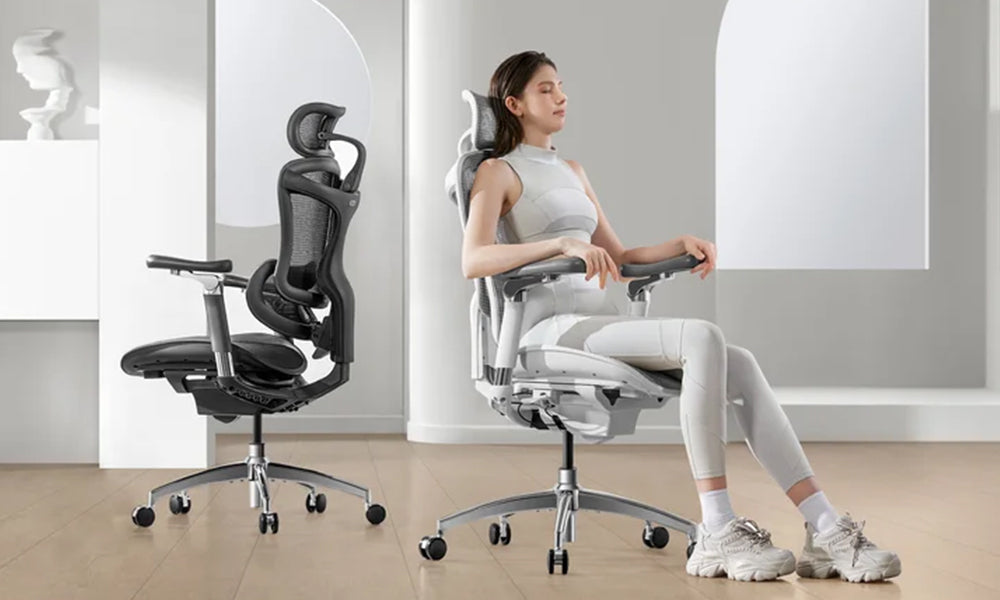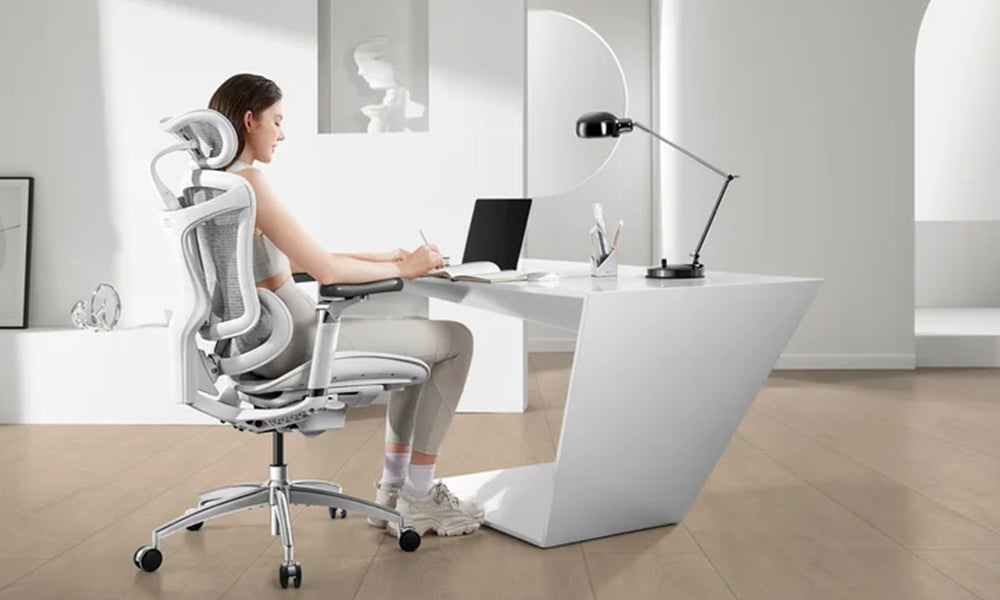In fast-paced and tech-driven world, many people spend a significant portion of their day working at desks. As the awareness of the importance of a healthy work environment grows, individuals and businesses alike are exploring options to enhance both productivity and well-being. Two popular choices are standing desks and ergonomic chairs. In this article, we will delve into the benefits and drawbacks of each, aiming to find the right balance for creating a workspace that promotes both comfort and health.
Section 1: The Rise of Health-Conscious Workspaces
The traditional sedentary work environment has been linked to various health issues, including obesity, cardiovascular problems, and musculoskeletal disorders. In response, businesses are increasingly recognizing the need to invest in solutions that promote a healthier lifestyle for their employees. This has given rise to the popularity of standing desks and ergonomic chairs, each offering its unique set of advantages.
Section 2: The Benefits of Standing Desks
Standing desks, also known as stand-up desks, allow users to work comfortably at a height that promotes standing rather than sitting. Here are some of the key benefits associated with standing desks:
a. Improved Posture:
One of the primary advantages of standing desks is the potential for improved posture. Maintaining an upright position while working can contribute to reduced strain on the neck, shoulders, and lower back.
b. Increased Energy and Alertness:
Standing encourages better blood circulation, which can lead to increased energy levels and improved cognitive function. Many users report feeling more alert and focused when working at a standing desk.
c. Weight Management:
Standing burns more calories than sitting, potentially contributing to weight management. While the difference may be subtle, over time, it can make a significant impact on overall health.
d. Reduced Risk of Health Issues:
Studies have suggested that prolonged sitting is associated with an increased risk of chronic diseases, such as heart disease and diabetes. Standing desks offer an alternative that may help mitigate these risks.
Section 3: The Drawbacks of Standing Desks
While standing desks offer numerous benefits, they are not without drawbacks. It's crucial to consider both sides to make an informed decision:
a. Fatigue and Discomfort:
Extended periods of standing can lead to fatigue and discomfort. Users may experience sore feet, leg pain, or lower back pain. It's essential to strike a balance between standing and sitting to avoid these issues.
b. Limited Adjustability:
Some standing desks may have limited adjustability, making it challenging for users to find the ideal height for their comfort. This lack of customization can contribute to discomfort and reduced usage.
c. Impact on Productivity:
For certain tasks that require intense focus or fine motor skills, standing may not be the most conducive posture. Users may find it challenging to maintain the same level of productivity when standing for extended periods.
Section 4: The Advantages of Ergonomic Chairs
Ergonomic chairs are designed to provide optimal support and comfort during extended periods of sitting. Here are some of the benefits associated with ergonomic chairs:
a. Lumbar Support:
One of the key features of ergonomic chairs is lumbar support, which helps maintain the natural curve of the spine. This can significantly reduce the risk of lower back pain, a common issue among office workers.
b. Customization Options:
Ergonomic chairs often come with a variety of customization options, allowing users to adjust the height, tilt, and armrests to suit their individual needs. This adaptability is crucial for creating a comfortable and supportive workspace.
c. Enhanced Productivity:
A comfortable and supportive chair can contribute to enhanced productivity. When employees are not distracted by discomfort or pain, they can focus more on their tasks and perform at their best.
d. Versatility:
Ergonomic chairs are suitable for a wide range of tasks, from computer work to meetings. Their versatility makes them a practical choice for various work settings.
Section 5: The Downsides of Ergonomic Chairs
Despite their many advantages, ergonomic chairs also have some drawbacks that users should be aware of:
a. Sedentary Lifestyle:
Even with the best ergonomic chair, sitting for long periods is still associated with health risks. It's essential to incorporate regular breaks and movement into the workday to counteract the negative effects of prolonged sitting.
b. Cost:
Quality ergonomic chairs can be relatively expensive, and businesses may need to invest a significant amount to provide them for all employees. However, many argue that the long-term benefits outweigh the initial costs.
c. Lack of Movement:
While ergonomic chairs provide comfort and support, they don't address the need for movement throughout the day. It's crucial for users to incorporate breaks and physical activity into their routine, even with the most ergonomic chair.
Section 6: Finding the Right Balance
The key to a healthy and productive work environment lies in finding the right balance between standing desks and ergonomic chairs. Here are some tips for creating an optimal workspace:
a. Sit-Stand Alternation:
Encourage employees to alternate between sitting and standing throughout the day. This can be achieved with adjustable desks that allow users to easily switch between sitting and standing positions.
b. Ergonomic Accessories:
Consider incorporating ergonomic accessories, such as anti-fatigue mats and footrests, to enhance comfort when standing. These accessories can mitigate the drawbacks associated with prolonged standing.
c. Regular Breaks and Movement:
Regardless of whether employees use standing desks or ergonomic chairs, it's essential to promote regular breaks and movement. Encourage short walks, stretching exercises, or even quick desk exercises to combat the negative effects of a sedentary lifestyle.
d. Employee Education:
Educate employees on proper ergonomics and the importance of maintaining a healthy work routine. Provide guidelines on how to set up their workspace for optimal comfort and productivity.
e. Trial Periods:
Allow employees to test both standing desks and ergonomic chairs to determine what works best for them. Some individuals may prefer the flexibility of alternating between sitting and standing, while others may find greater comfort in a well-designed ergonomic chair.
Conclusion
In the quest for a healthier work environment, the choice between standing desks and ergonomic chairs is not a binary one. The key is to strike a balance that meets the unique needs of individuals while addressing the potential drawbacks of each option. By incorporating a mix of sitting, standing, and movement throughout the workday, businesses can create a workspace that promotes both employee well-being and productivity. Ultimately, the right balance is a personalized one that takes into account the diverse needs and preferences of the workforce.



